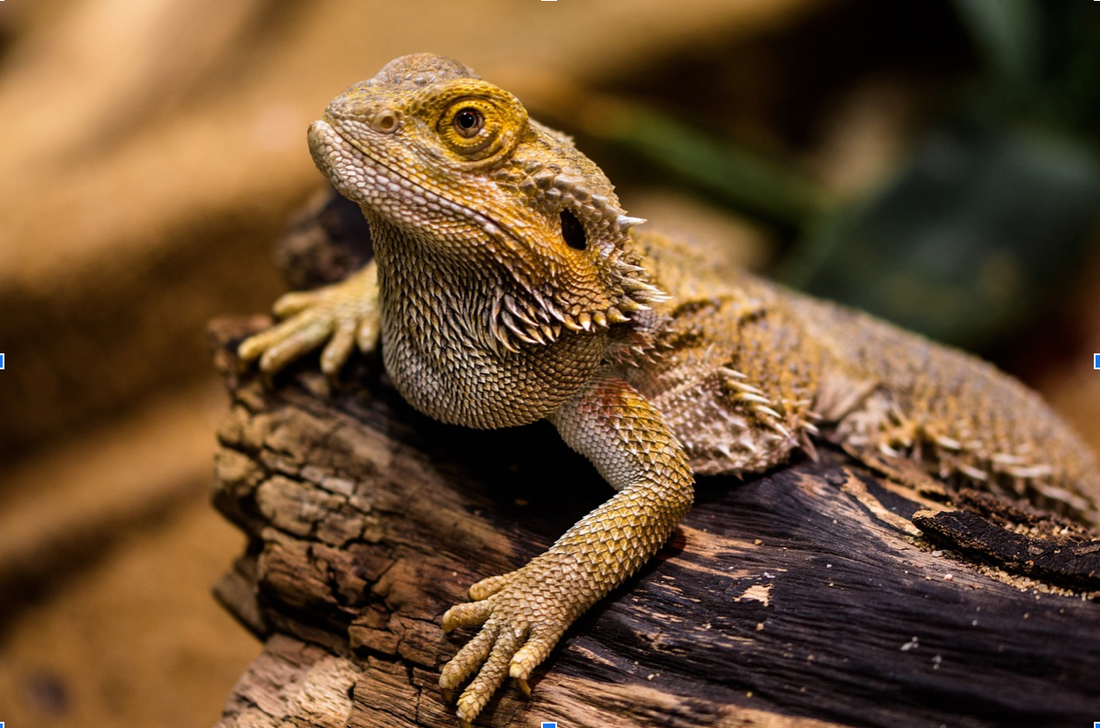
Bearded dragons are one of the most exciting pets to own. There are eight different species of the bearded dragon in the wild, and only half of them are domesticated.
Bearded dragons can morph and change colors. The color of your bearded dragon is a window into their emotions and well-being. Depending on its color, you can tell if your dragon is upset, cold, warm, or content.
You may wonder what signs and indicators to look for with your pet dragon. Here are six essential things owners need to know regarding their bearded dragon’s color.
Why Do Bearded Dragons Change Color?
Before diving into what the colors on your bearded dragon mean, it can be helpful to know why they change color in the first place. Depending on the circumstances, bearded dragons change color to stabilize their body temperature, communicate (with you and other animals), and become camouflaged in their environment.
Many reptiles can change color by redistributing pigments within their skin cells. Bearded dragons have the benefit of this, more specifically in their beard (hence the name!).
With body temperature regulation, depending on the amount of light your dragon is exposed to, it can reflect more light or absorb more heat. The color also changes to aid in its camouflage, so your bearded dragon can match the level of sunlight and shadows, blending into the environment so you can’t see it easily.
The method of communication when it comes to color changes can indicate how your dragon is feeling. It may be feeling angry, submissive, or friendly. Their beard color is the best way for an owner to understand what to do next.
If you’re looking into becoming a bearded dragon owner, you should know about their color-changing capabilities.
- They Change Color When Sleeping
You may have noticed your bearded dragon changing color when it's asleep. They are lighter colored while sleeping due to the circadian rhythms and will be dark when they first wake up, especially when it’s colder.
Overnight sleeping lends itself to your dragon feeling cold, so it will get darker in an attempt to absorb more heat. If temperatures where you live frequently drop during the evening, this explains its color change. Typically, bearded dragons are cooler when awake, so they display a dark beard color that gets lighter throughout the day as they become warmer.
- They Change Color When Shedding
Like most reptiles, your bearded dragon must shed its skin every so often. When it sheds, you’ll notice that it also changes color. Before the shed occurs, it will be a lightened color, almost translucent-looking, as their shed begins lifting away.
Once it sheds, the color seems more vibrant. The pigments within its skin cells create a pattern, and the shedding lifts off those top layers, which are white and don’t have pigment, making its color seem drab and dull.
- They Change Color Depending on Mood
Emotions and feelings play a role in your bearded dragon’s color display. The color has a light, warm hue when it's in a good mood. It appears this way because it’s warm and cozy since these pets like heat.
If you notice the beard on your dragon has become dark or even black, this indicates it’s feeling cold and stressed. You may need to expose it to heat or turn on your heat lamp to relax and be happy again.
- They Change Color When They Are Sick
If you notice that your bearded dragon is displaying a red color, it may cause concern. Though the red hue may be a stain due to what it’s eating, the red color can indicate injury or infection. It may not be an immediate cause for an alarm, but you should find out what’s causing the red color as soon as possible.
Some of the more common causes for red on your bearded dragon indicate:
- Staining - It could be that your dragon was stained by something red within its environment, so look around for anything that might’ve gotten on its skin. Red-based foods and specialized diets with red foods can also cause staining.
- Infections - redness on the skin can indicate an infected site trying to heal. You may notice it is also swollen, warm to the touch, or see skin breakage. In this instance, you should contact your vet or specialist if it’s bacterial or fungal and needs treatment.
- Shedding - if you notice the redness is around the tip of the tail or the toes, it may be associated with its shedding cycle. Sometimes there is a constriction that limits blood flow when shedding. You may want to have your bearded dragon examined since it can cause loss of limbs if not dealt with properly.
Many vets provide a telehealth vet appointment where you can have them look at your bearded dragon on a screen before being brought in. It helps save time in case nothing is seriously wrong, but it can help ease your mind if you have concerns about your bearded dragon’s color.
- Belly Color Changes
If your bearded dragon gets on its back, you may see its belly change colors. Its belly is more exposed to the ground than the sky, so it’s more prone to experience color stains from food or feces, making it appear to change colors.
The skin is thin and soft, so internal changes are more present. You should note if you see a dark belly on your bearded dragon since this can indicate digestive issues or blockage. When stressed, it also tends to display “stress marks,” which are dark lines across the belly area.
- Tail Color Changes
Lastly, your bearded dragon’s tail changes colors, too. It can be due to several reasons, including growth, shedding, or hot and cold temperatures. The most noticeable time you see the tail changing colors is during the shedding process. It typically will turn white, and the skin will shed first or last, so you’ll see the color difference in the tail as a contrast to the rest of its color.
If you see that the tail or end of the tail is turning black, it could indicate injury or trauma. Sometimes, it causes the tip of your bearded dragon’s tail to die and fall off the body. An inadequate diet is another reason for a dark tail. Make sure your dragon is looked at by a professional if you notice any black color.
- They Change Color With Their Diet
Nutrition plays a role in how your bearded dragon feels. Usually, if it’s eating something cold or warm, you’ll notice changes in its color. Bearded dragons know when they feel full from eating, so they usually stop. Being full also means feeling warm because the digestive process will begin, so you’ll see some color change at this time.
Some of the best foods for your dragon include tomatoes, carrots, and protein blends. As noted previously, it can change a color hue due to the food it is eating due to staining. Sometimes your dragon may change to darker if it’s eaten something and then has trouble digesting or feeling bad. If you see this happen, you should contact a veterinarian for assistance.
Your Bearded Dragon Pet
Bearded dragons are excellent pets for those who like reptiles and beginning owners. It’s easy to manage their living space, food, and routine. Bearded dragons are sociable and intelligent, and you can engage them in gentle playtime by holding them or taking them for a short walk on a leash.
Understanding your dragon’s colors is a gateway to learning how to communicate with them in a straightforward manner. Yellow and orange colors typically indicate warmth, feeling relaxed and happy, while colors such as red or black can indicate a possible health issue. Pay attention to the social signals displayed in colors, and you’ll be able to better care for your bearded dragon’s well-being.

